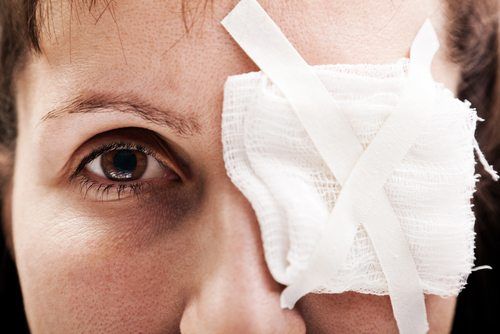As the premier vision center located in Summerville, South Carolina, Jackson Davenport Vision Center’s optometrists are often asked which activities have the highest risk to eye health. Being active is part of a good health regimen, but, as with all things, moderation is the key to keeping you safe. In this article, we will discuss the sports with the highest rate of eye injuries, eye injuries that occur at home and how to avoid them, and toys that can damage children’s eyesight.
What Sports Have the Highest Rate of Eye Injuries?
Prevent Blindness America (PBA) reports that basketball is the number one sport for eye-related injuries. Approximately 6,000 Americans suffer from basketball-related eye injuries each year, many of which fall into the 15 -24 age group. Also surprising is that water and pool sports such as diving, swimming, and water skiing collectively make up the second leading cause of sports-related eye injuries and guns (air, gas, spring, and BB) take third place.
Sports-related eye injuries facts:
- Most eye injuries among kids aged 11 to 14 occur while playing sports.
- Baseball/softball is a leading cause of eye injuries in children 14 and under.
- Protective eyewear can prevent 90% of sports-related eye injuries.
A list of the sports with the highest reported sports injuries include:
- Basketball
- Water/Pool activities
- Guns/Shooting
- Baseball/Softball
- Weightlifting/Health club exercise
- Ice Hockey
- Racquet Sports
- Fencing
- Lacrosse
- Paintball
- Boxing
It is highly recommended that everyone wear protective eyewear while playing sports, especially if prescription eyewear is required. Ordinary prescription sunglasses do not provide adequate protection, and eyewear worn during athletic activity should be sport-specific and must sit comfortably on the face.
What Eye-Related Injuries Occur at Home?
The family home is a fairly unthreatening setting, but there are few things to keep in mind. The yard and garage are the most common sites of serious eye injury, and only 35% of homeowners always wear protective eyewear when doing home repair or projects. This alarming trend is why the American Academy of Ophthalmology and the American Society of Ocular Trauma now recommend that every household have at least one pair of ANSI-approved (American National Standards Institute) protective eyewear for use during projects and activities that may present the risk of injury.
Eye injury risks in the house.
- Using hazardous products and chemicals such as oven cleaner and bleach for cleaning and other chores, accidents involving common household products cause 125,000 eye injuries each year.
- Cooking foods that can splatter hot grease or oil
- Opening champagne bottles during a celebration
- Drilling or hammering screws or nails into walls or hard surfaces such as brick or cement; the screws or nails can become projectiles, or fragments can break from the surface.
- Using hot objects such as curling irons around the face as inadvertent contact with the user’s eyes can cause serious injury.
- Loose rugs and railings or other hazards that could cause falls or slips
- Excessive television viewing and video game pose another risk. Not only are your eyes constantly adjusting to focus on different colors, sizes, and objects, but they are often focused on the screen at a close distance for long periods of time. This type of eyestrain can cause headaches, blurred vision, and other serious complications.
Eye injury risks in the yard.
- Mowing the lawn
- Using a power trimmer or edger
- Clipping hedges and bushes
Eye injury risks in the garage or workshop.
- Using tools (power or hand)
- Working with solvents or other chemicals
- Any task that can produce fragments, dust particles, or other eye irritants
- Securing equipment or loads with bungee cords
For all of these activities, it is important to remember that bystanders also face significant risks and should take precautions against eye injuries, too. This is particularly important for children who watch their parents perform routine chores in and around the home. Bystanders should wear eye protection too or leave the area where the work is being done.
How Can I Prevent Eye Injuries at Home?
Wearing protective eyeglasses will prevent 90% of eye injuries, so make sure that your home has at least one pair and wear the eyewear when risks come into play. There will still be occasions when accidents and injuries happen. Consider taking some of these safety steps around the home to diminish the risks even more:
- Read the labels of chemicals and cleaners carefully, and do not mix products.
- Secure rugs and railings
- Cushion sharp corners and edges of furnishings and home fixtures if you have children or the elderly in your house
- Check the lawn or the outdoor area where you will be working for debris that can become projectiles.
- Keep your tools in good condition, and damaged tools should be repaired or replaced.
- Make sure that all spray nozzles are directed away from you
- Use grease shields on frying pans to protect from splattering
What Toys Pose the Greatest Threat to My Child’s Eyesight?
Choosing the right toys for eye safety is a concern for every parent. Children are born with an immature visual system that needs to be stimulated to promote normal infant vision development. The good news is nothing stimulates a child’s vision more easily than a toy. But it is important to choose safe toys. Keep in mind that most childhood accidents occur at home, many with toys. Children spend a great deal of time playing with their toys, so you need to make sure those toys are safe for overall health and eye safety.
Usually, when toys are not safe, it’s because they are not age-appropriate for the child. That being said, toys to avoid include,
- Toy fishing poles can be especially dangerous to the eyes of nearby children.
- Guns that shoot ANY projectile. This includes toy guns that shoot lightweight, cushy darts. You might think these soft projectiles would pose little or no risk, but toy guns of this type can shoot up to distances of 75 feet, and the darts move at speeds fast enough to cause a serious eye injury — especially when used at close range indoors.
- Water balloon launchers and water guns. Water balloons can cause serious blunt trauma to the eye that can cause retinal detachment and permanent vision loss. Even toy guns that shoot a stream of water can cause serious eye damage, especially when used at close range.
- Aerosol string (Silly String). The chemicals in these products can cause eye irritation and a type of pink eye called chemical conjunctivitis. When used at close range, the aerosol string also can cause a corneal abrasion that could lead to serious eye infections.
- Laser pointers and bright flashlights. Though technically not toys, many children love to play “laser tag” or “flashlight tag.” Like those used for business presentations, portable laser pointers should never be used by children, as the light intensity of these devices is sufficient to cause permanent vision loss. Even high-powered LED flashlights can be dangerous because they can cause temporary blindness, putting children at risk of falling or other accidents.
- Buy toys that will withstand impact and not break into dangerous shards.
- Look for the letters “ASTM.” This designation means the product meets the American Society for Testing and Materials’ national safety standards.
- Do not give toys with small parts to young children. Young kids tend to put things in their mouths, increasing the risk of choking. If any part of a toy can fit in a toilet paper roll, the toy is not appropriate for children under 3.
The optometrists at Jackson Davenport Vision Center understand the importance of eye protection and eye health. Always supervise children and demonstrate to them how to use their toys safely and take it easy on the DIY projects. If you have not had an eye exam recently, contact the Jackson Davenport Vision Center and schedule an appointment today.

